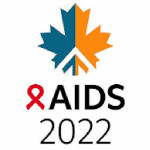Switching to Norvir (ritonavir)–boosted Prezista (darunavir) monotherapy after achieving an undetectable viral load using combination antiretroviral (ARV) treatment worked well in two clinical trials reported at the Fifth International AIDS Society (IAS) Conference on HIV Pathogenesis, Treatment and Prevention in Cape Town. While both studies found Norvir/Prezista alone to be comparable to continued triple-drug therapy, the immediate benefits associated with this treatment simplification approach remain unclear.
The idea of switching from combination ARV treatment to a simplified regimen consisting of nothing more than a boosted protease inhibitor isn’t new. It can substantially reduce the long-term costs of treatment, proponents say, and potentially limit side effects, notably those typically associated with nucleoside reverse transcriptase inhibitors (NRTIs).
Most research testing this approach has involved Kaletra (ritonavir-boosted lopinavir). While studies have found that the overall efficacy of Kaletra monotherapy is inferior to standard combination treatment, some clinical trials show that the efficacy improves in patients who start monotherapy only after they’ve kept their viral load low for at least six months. But according to an analysis published earlier this year in AIDS, about 10 percent of patients who switched to Kaletra monotherapy experience low-level rebounds in viral load, potentially accumulating drug-resistance mutations.
Norvir-boosted Prezista may be more effective than Kaletra in first-time treatment takers, according to the 96-week results of one study reported last year. In turn, researchers have tried their luck at keeping viral loads undetectable upon switching patients from combination treatment to Norvir/Prezista monotherapy.
The first study, dubbed the MONET trial, randomized 256 patients with undetectable viral loads while on any combination of drugs to switch to either Norvir/Prezista plus two NRTIs or Norvir/Prezista monotherapy. The second study, the MONOI trial, started 226 individuals on Norvir/Prezista plus two NRTIs. After maintaining an undetectable viral load for eight weeks, 113 participants were maintained on combination therapy while 112 were switched to Norvir/Prezista monotherapy.
Of note, the MONET study utilized once-daily Norvir/Prezista (100 mg/800 mg) dosing whereas MONOI used twice daily dosing (100 mg/600 mg).
In the strict intention-to-treat (ITT) analysis of the MONET study, 84.3 percent in the monotherapy group, compared with 85.3 percent of those on combination therapy, maintained viral loads below 50 copies after 48 weeks. According to Jose Arribas, MD, of the Hospital La Paz in Madrid, who presented the MONET results at IAS, this finding—along with other efficacy analyses—suggests that Norvir/Prezista monotherapy is “non-inferior” to Norvir/Prezista-based combination therapy.
Virologic results of the MONOI study, presented by Christine Katlama, MD, of the Pitié-Salpétrière University Hospital in Paris, differed somewhat. In the ITT analysis, 92 percent of those in the combination therapy group, compared with 87.5 percent of those in the Norvir/Prezista monotherapy group, maintained viral loads below 400 after 48 weeks—a difference slightly beyond parameters set by the study investigators needed to establish non-inferiority. In a less stringent “per-protocol” analysis, however, 99 percent of those in the combination therapy group, compared with 94.1 percent of those in the monotherapy group, maintained viral loads below 400. This difference was not statistically significant and, thus, indicated Norvir/Prezista monotherapy to be non-inferior to continued combination therapy.
In the MONET study, more patients in the monotherapy group than in the combination therapy group were likely to experience low-level viral load rebounds—detectable virus between 50 and 400 copies. However, as the overall efficacy rate attests, these virologic “blips” did not appear to jeopardize long-term success.
Among those who switched in both studies, the risk of serious side effects did not appear to be significantly lower. In MONET, gastrointestinal problems and rash were no less likely to be documented than in those who remained on combination ARV therapy. Severe liver enzyme increases—usually in association with concurrent hepatitis A and B infection—were more likely in the monotherapy group than in the combination ARV therapy group.
In MONOI, serious adverse events occurred in 15 patients who continued on combination therapy, compared with 14 in the Norvir/Prezista monotherapy group.
Also in MONOI, detectable levels of HIV were documented in the cerebrospinal fluids (CSF) of two patients in the monotherapy group who experienced central nervous system (CNS) problems. After NRTIs were added to their therapy—protease inhibitors are the least likely of the available ARV drug classes to penetrate the CNS—their HIV levels in the CSF once again were undetectable and symptoms were resolved.






1 Comment
1 Comment